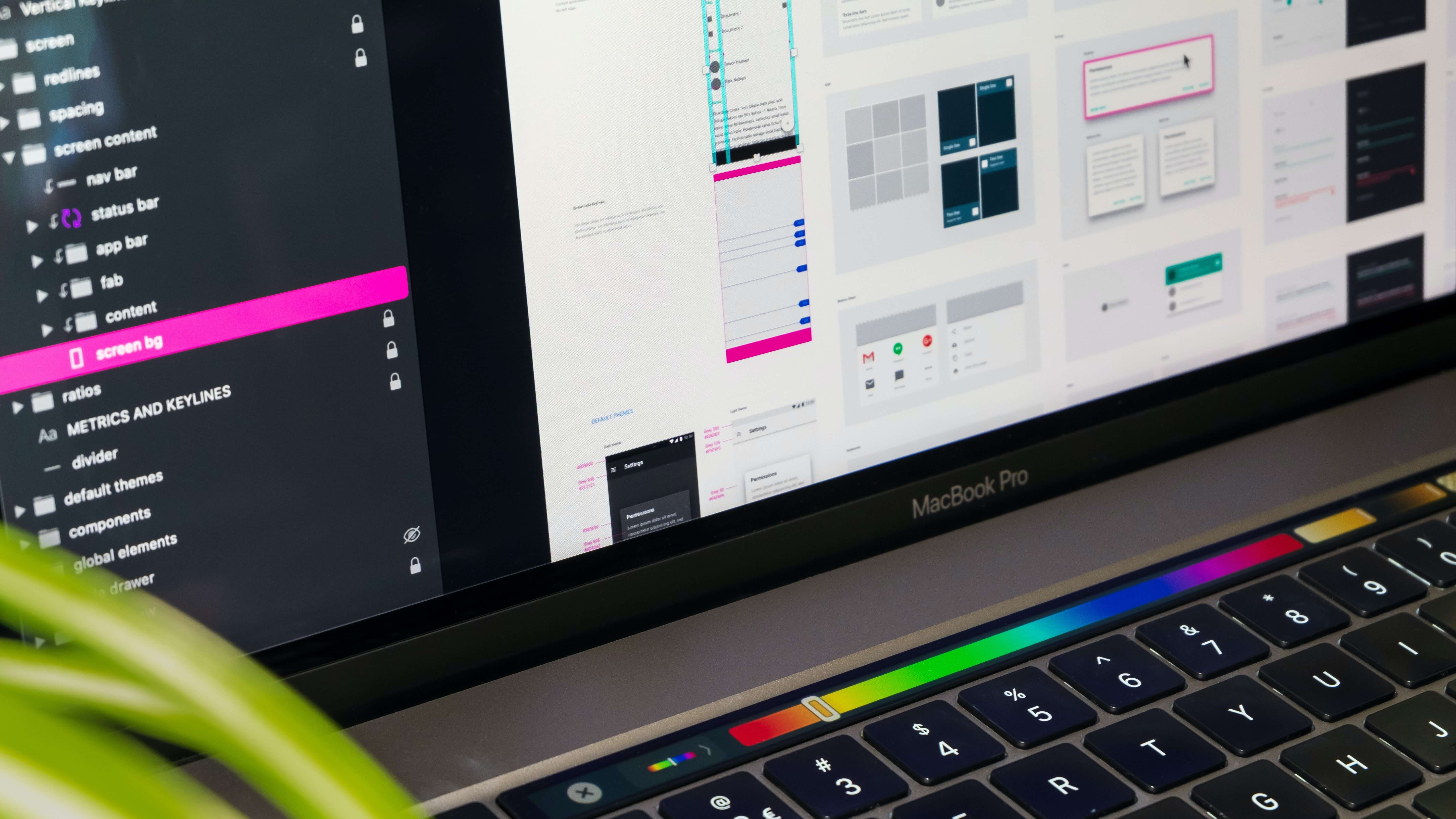
Benefits of UX Research: How to Gather Insights and Improve Your Design
By David Ephraim, ATAK Interactive President, Development + Operations
Do you want to create a design that truly resonates with your users and meets their needs? If so, then you need to start with UX research. UX research is the process of understanding user behavior, needs, and motivations to create better products and services. In this blog post, we will explore the benefits of UX research and show you how to gather insights to improve your design. So, whether you're a seasoned designer or just starting out, read on to learn how UX research can help you create designs that your users will love.
The Importance of UX Research for Designers: An Introduction
The importance of UX research for designers cannot be overstated. UX research provides designers with valuable insights into user behavior, preferences, and needs, allowing them to create products and digital experiences that are user-centered, intuitive, and effective. Most businesses look for UX design services not only for daily tasks but for much larger projects that need a lot of research. UI/UX design and development services provide a lot of flexibility and value to companies that are looking to take that area of business to the next level.
UX research involves a variety of techniques, including user surveys, usability testing, and user interviews, all of which provide designers with critical feedback on the design of their products and digital experiences. By conducting UX research, designers can gain a deeper understanding of the target audience and their needs, identifying pain points and areas for improvement.
Incorporating UX research into the design process can also save time and money, as it allows designers to identify potential issues early on in the process, avoiding costly design mistakes down the road.
In summary, UX research is essential for designers, providing critical feedback on user behavior, preferences, and needs. By incorporating UX research into the design process, designers can create products and digital experiences that are user-centered, intuitive, and effective, ultimately driving business success.
Types of UX Research Methods for Gathering Design Insights

UX research involves a range of methods for gathering data and insights about user behavior, preferences, and needs. These methods can be broadly divided into two categories: qualitative and quantitative research. Qualitative research methods involve gathering in-depth insights about user behavior, needs, and attitudes through techniques such as interviews, focus groups, and ethnographic observation. Quantitative research methods involve collecting data on user behavior, preferences, and needs through techniques such as surveys and analytics.
Designers may use a range of UX research methods, depending on the goals of their research and the stage of the design process. For example, user interviews can be a valuable tool for gathering in-depth insights about user needs and preferences during the early stages of the design process. Usability testing, on the other hand, is a valuable method for evaluating the effectiveness of a design in meeting user needs and preferences.
Creating Effective User Surveys for UX Research
Surveys are a common UX research method for gathering data on user preferences and behavior. However, designing an effective survey requires careful planning and execution. To create an effective user survey, designers must carefully consider the goals of their research, the target audience, and the questions they ask.
When designing a user survey, designers should focus on creating clear and concise questions that are easy to understand and answer. Questions should be focused on gathering data that is relevant to the research goals and should be structured in a logical and intuitive order. Designers should also consider the length of the survey, as longer surveys can lead to low response rates and data quality.
Usability Testing: A Crucial Step in the UX Research Process

Usability testing is a vital step in the user experience (UX) research process. It involves evaluating a product or service's usability by testing it with actual users. This process is essential because it helps identify design flaws and usability issues that may hinder the product or service's adoption or usage. By understanding how users interact with a product or service, developers and designers can improve the user experience, resulting in a more successful product or service.
Usability testing can take many forms, from moderated testing with a facilitator to unmoderated testing with a remote participant. Some usability testing methods include:
In-person testing: In-person testing involves recruiting participants to come to a designated location to test the product or service. This method allows for more control over the testing and is part of ui/ux design services.
Remote testing: Remote testing involves recruiting participants to test the product or service from their own location. This method provides more flexibility but may require additional planning to ensure a smooth testing experience.
Automated testing: Automated testing involves using software tools to simulate user interactions with the product or service. This method is useful for testing specific functions or features and can be more efficient than manual testing.
Regardless of the method used, the primary goal of usability testing is to understand how users interact with a product or service. To achieve this goal, researchers typically follow a standard process that involves the following steps:
Define the testing goals: The first step in usability testing is to define the testing goals. This involves identifying what aspects of the product or service will be evaluated and what questions the researchers hope to answer.
Recruit participants: The next step is to recruit participants who match the target audience for the product or service. Participants should be representative of the user population and should be screened for any potential biases that may influence their feedback.
Design the test protocol: The test protocol is a plan that outlines the testing process, including the tasks that participants will complete and the questions that researchers will ask. The protocol should be designed to achieve the testing goals and should be reviewed and approved by stakeholders.
Conduct the testing: During the testing phase, participants will be asked to complete the tasks outlined in the test protocol. Companies with UI/UX design services will observe and record the participant's behavior and ask questions to gain additional insights.
Analyze the results: After testing is complete, researchers will analyze the results to identify trends, patterns, and insights. This information will be used to inform design decisions and improve the user experience.
Iterate and improve: Finally, the insights gained from usability testing should be used to iterate and improve the product or service. This may involve making design changes, updating the user interface, or adjusting the functionality of the product or service.
Usability testing is a crucial step in the UX research process. By understanding how users interact with a product or service, designers and developers can create a better user experience that meets the needs of their target audience. Whether testing in-person, remotely, or using UX UI design services, usability testing provides valuable insights that can inform design decisions and drive product success.
The Role of UX Research in Design Iteration and Improvement

The role of UX research in design iteration and improvement cannot be overstated. UX research provides designers with critical feedback on user behavior, preferences, and needs, allowing them to make informed decisions about the design of their products and digital experiences.
Design iteration is an ongoing process, with designers using feedback from users to make incremental improvements to their designs. UX design services research is essential in this process, providing designers with insights into how users interact with their designs and identifying areas for improvement.
By conducting UX research, designers can gain a deeper understanding of user needs and preferences, identifying pain points and areas where the design can be improved. This feedback is then used to make iterative changes, refining the design to better meet the needs and preferences of users.
Collaborating with Stakeholders: Communicating UX Research Findings

Effective communication is critical when sharing UX research findings with stakeholders. Collaborating with stakeholders, including designers, developers, and business leaders, is key to ensuring that the insights gained from UX research are integrated into the design process.
Designers should use clear and concise language when presenting UX research findings, highlighting key insights and recommendations. Visual aids, such as charts and graphs, can also be helpful in communicating complex data and insights. Additionally, designers should be prepared to answer questions and address concerns from stakeholders, working together to ensure that the design meets the needs of the target audience.
Measuring the Impact of UX Research on Design Success
Measuring the impact of UX research on design success is essential for understanding the effectiveness of the design process. By analyzing metrics such as user engagement, conversion rates, and customer satisfaction, designers can gain insights into the impact of UX research on the success of their designs.
Designers should establish clear objectives and metrics for measuring the impact of UX research on design success. By setting clear goals, designers can make data-driven decisions about design improvements, ensuring that the design meets the needs and preferences of the target audience.
Additionally, designers should be prepared to iterate and refine their designs based on the results of UX research, continuously improving the user experience and driving business success. By monitoring and analyzing the impact of UX research on design success, designers can create products and digital experiences that are not only visually appealing but also effective in meeting user needs and driving business success.
Conclusion
UX research is an essential tool for designers to create products and digital experiences that are user-centered, intuitive, and effective. The benefits of UX research are vast, including gaining valuable insights into user behavior, preferences, and needs, identifying pain points and areas for improvement, saving time and money by avoiding costly design mistakes, and ultimately driving business success. UX research involves a range of methods, including qualitative and quantitative research, user surveys, usability testing, and collaboration with stakeholders. By incorporating UX research into the design process, designers can make data-driven decisions, iterate and refine their designs based on user feedback, and measure the impact of UX research on design success.
Related Posts

How UI/UX Design Trends Are Shaping the Future of User Experience
User Experience (UX) and User Interface (UI) design are critical components of creating digital products that users enjoy using. Over the years, these…

How can a UI/UX Agency Impact My Business and Improve Our Customer Behavior?
In today's world, a strong online presence is crucial for the success of any business. One of the key factors that can make or break your online presence…

The Top AI-Powered Tools You Need to Know About Graphic Design
Artificial intelligence (AI) has become a game-changer for many industries, including graphic design. AI graphic design tools utilize machine learning and…